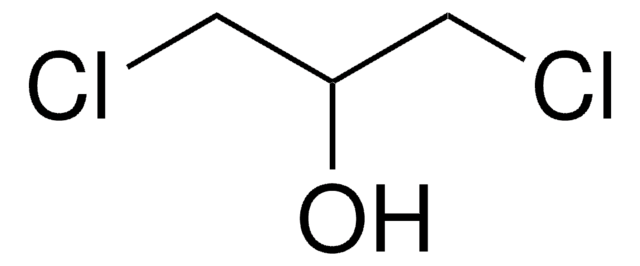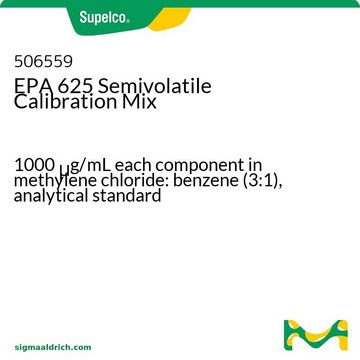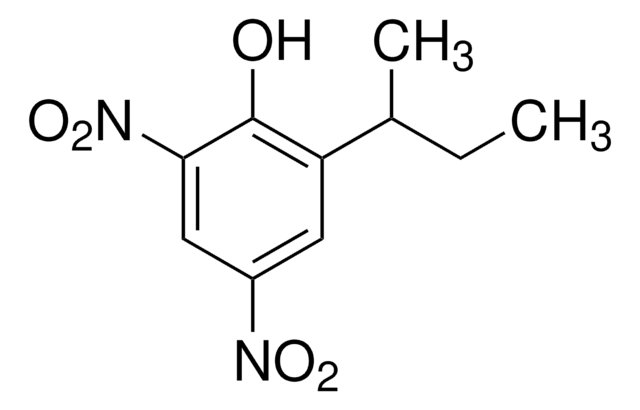Kluczowe dokumenty
48498
Bis-(2-chloroisopropyl) ether
analytical standard
Synonim(y):
2-Chloroisopropyl ether
About This Item
Polecane produkty
klasa czystości
analytical standard
Certyfikat analizy
current certificate can be downloaded
opakowanie
ampule of 100 mg
metody
HPLC: suitable
gas chromatography (GC): suitable
Zastosowanie
environmental
format
neat
temp. przechowywania
2-8°C
ciąg SMILES
CC(CCl)OC(C)CCl
InChI
1S/C6H12Cl2O/c1-5(3-7)9-6(2)4-8/h5-6H,3-4H2,1-2H3
Klucz InChI
QCFYJCYNJLBDRT-UHFFFAOYSA-N
Szukasz podobnych produktów? Odwiedź Przewodnik dotyczący porównywania produktów
Opis ogólny
Zastosowanie
Hasło ostrzegawcze
Danger
Zwroty wskazujące rodzaj zagrożenia
Zwroty wskazujące środki ostrożności
Klasyfikacja zagrożeń
Acute Tox. 3 Oral - Acute Tox. 4 Inhalation
Kod klasy składowania
6.1A - Combustible acute toxic Cat. 1 and 2 / very toxic hazardous materials
Klasa zagrożenia wodnego (WGK)
WGK 3
Temperatura zapłonu (°F)
185.0 °F
Temperatura zapłonu (°C)
85 °C
Środki ochrony indywidualnej
dust mask type N95 (US), Eyeshields, Faceshields, Gloves
Wybierz jedną z najnowszych wersji:
Masz już ten produkt?
Dokumenty związane z niedawno zakupionymi produktami zostały zamieszczone w Bibliotece dokumentów.
Nasz zespół naukowców ma doświadczenie we wszystkich obszarach badań, w tym w naukach przyrodniczych, materiałoznawstwie, syntezie chemicznej, chromatografii, analityce i wielu innych dziedzinach.
Skontaktuj się z zespołem ds. pomocy technicznej









